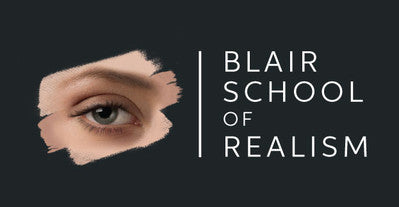I'm often asked, why do you prefer to paint photorealistically? Why not just take a picture?
I take it to mean, why copy a photograph if a camera can do the same thing?
To be honest, I don't see a purpose in competing with the camera. It's a wonderful recording device.
So why paint photorealistic imagery?
1. Gratification. There is something satisfying about overcoming a difficult challenge, and photorealism is the most difficult form of painting. It demands perfect proportions, color, texture, detail, edges, light, shadow, and so on, but if you are successful, the result is a high-quality painting.
2. You can measure your success. If you've done everything well, you can compare your painting with the reference photograph and quickly see where you need to improve.
3. Training. Copying/studying photographs is a great exercise. It allows the artist a perfect method to learn color discrimination, edges, proportions, perspective, negative space, shapes. but most of all, it teaches them to think two-dimensionally.
Why is interpreting reality in two-dimensions important for a painter? Because the painting surface is two-dimensional. It's a big advantage to learn to transpose the 3D world into the two-dimensional world of shapes and edges
4. Capability. A photorealist can easily paint in any style, because less realistic styles are less demanding than photorealism. Moreover, a photorealist eventually gains command over the visual image and is able to conjure illusions of reality that never existed except in the artist's mind.
You know that you've reached some degree of success when your entire painting has been generated out of your imagination, and you are still accused of being a "copy machine" by other artists.
Detractors
There are some artists who insist that using photographic reference as a tool is a problem, in that it creates a crutch, and limits the development of crucial skills. However, I've never observed this to be the case. My drawing skills have increased from studying photographs, especially when interpreting negative space in my work.
Some even claim that paintings that are copies of photographs cannot be considered "real" or "fine art." (I'm curious as to how they can verify which paintings are copies of photographs). Of course there are plenty of artists that made their careers using the photograph, such as Chuck Close, and Norman Rockwell.
I think that these detractors are not opposed to copying photographic sources, as long as its not done too well.
Additionally, the dynamic range of a photo is quite limited. It cannot reproduce the brightest highlights or the deepest shadows. But then again, neither can the paint on canvas
Opponents of copying photographs insist that students cannot learn anatomy from copying photographs. Perhaps, but can they really learn anatomy from painting nature? Sculpting would teach them more about anatomy. Many students learn anatomy from studying books too. Wait. Aren't book pages two-dimensional?
The other contention that some people have against copying from photographs is that a photograph cannot reproduce the mass of a photo. Ummm, but neither can a drawing or a painting.





Ryan Barkley
April 08, 2021
Great article
Fred steward
April 08, 2021
Absolutely fantastic.. I for one love photo realism since painting this way I feel I’m getting better and better painting after painting .. I have a long way to go yes but with the skills dru offers I feel I’ll achieve my goals … for me there no better way than photo realism
Tom Mulliner
August 22, 2021
Some great points there, Dru. It’s an odd world where an artist sometimes has to justify why they paint in a certain way. If the camera existed a few hundred years earlier, I’m sure the Dutch Still Life masters such as Pieter Claesz and Willem Kalf would be photorealists. Looking at their work, it is obvious that they were thirsty for realism.
RICKIE SNY
August 24, 2021
Doing years of artwork, using limited available media resources, forces the mind to improvise learned techniques to achieve the likeness of the subject image. Trial by error of applying mediums to surfaces. Selecting inks, dyes and paint colors to match what you see. The finer the detail, with exact proportion, the better the results. For centuries artists have used live models as their references. Critics are often skeptical of replicating photographs, as they have not yet tried to do it themselves. Experience and hands are the real deal. Perfection of exacting an image, is rewarding challenging to atune the senses of the artist. As an artist, portraiture is what I enjoy the most. Even the subjects hats, clothing and jewelry. That is a daunting challenge.